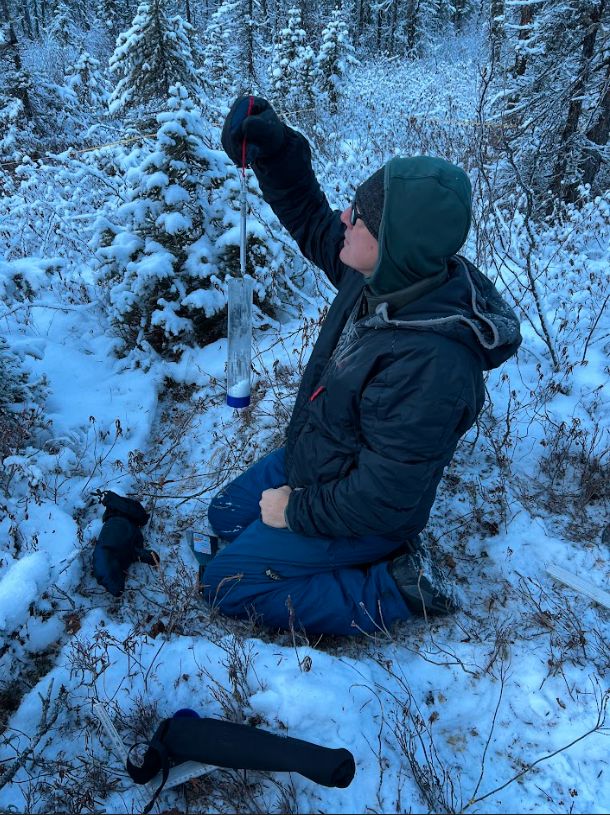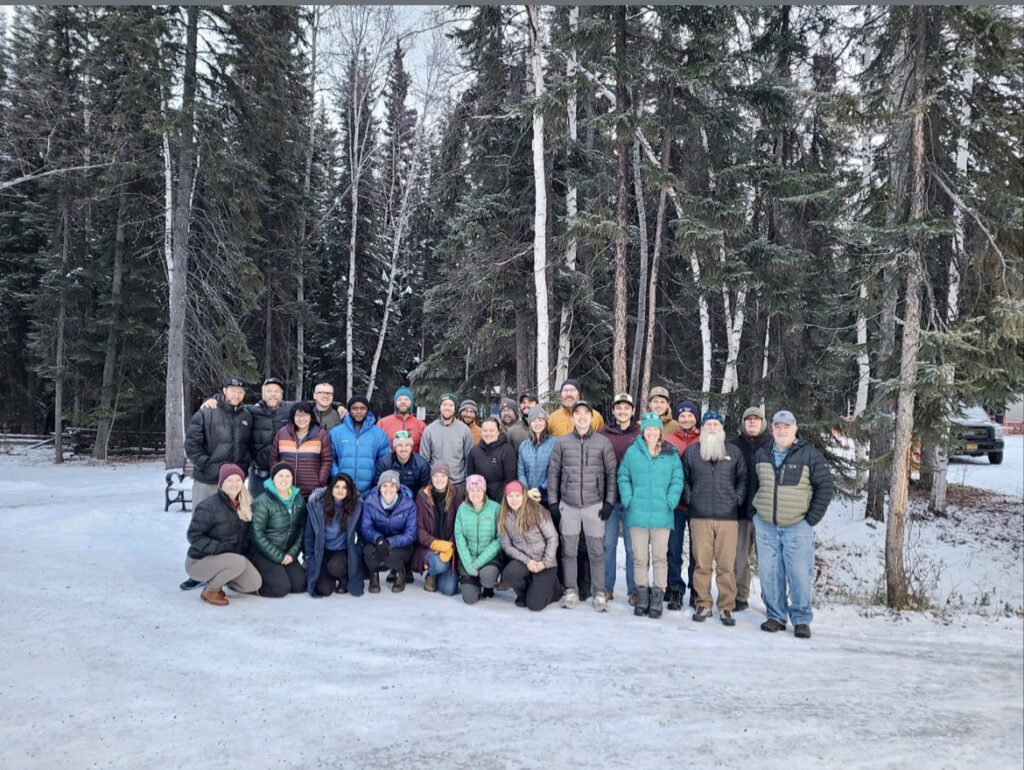Bareera Mirza (A first-year Geography Ph.D. student)

I am Bareera Mirza, a Pakistani Muslim woman who lived all her life near the coast, far from the mountains. Despite that, I developed my love for snow/glaciers when I first visited Skardu (a city in the Himalayas of Pakistan) in April 2018; and that was my first time seeing snow and glaciers. After the initial exposure, I revisited the Himalayas multiple times to gain a deeper understanding of the lifestyles of the local populace. It was a life-changing experience to talk to local people, learning about their struggles living near the mountains and their dependency on changing nature and climate. It was the combination of these visits, the exposure gained in classes, and the lessons learned from my professors that inspired me to pursue my current trajectory.


Pre-Field Trip:
In October 2022, I participated in the National Aeronautics and Space Administration (NASA) SnowEx 2023 Tundra and Boreal Forest campaign in Fairbanks, Alaska, a multi-year field campaign to observe snow and come up with the best remote sensing technologies to accurately predict snow throughout the season in various environments. SnowEx is part of an effort of NASA’s upcoming special snow satellite, which can help predict the amount of water available in snowpack for better water management use.
NASA SnowEx was nothing less than a dream come true. However, I could feel the nervousness among my family and loved ones (out of safety concerns) because it is unusual for Pakistani women to do such kind of fieldwork in the extreme weather of Fairbanks, Alaska. Not to mention an unfamiliar territory (I didn’t even know the types of gear I would need – like what on earth is gaiter?). I am incredibly thankful to my advisor Dr. Mark Raleigh and the team at NASA Goddard, who helped me with field trip preparation and made the process manageable and easy to navigate.
Science Talk:
My collaborative team, consisting of 40 scientists from NASA and different institutions, reached Fairbanks, Alaska, to observe five different test sites. I was assigned a Boreal Forest test site, Bonanza Creek – one of the largest forested biomes on Earth, covering 17 million km2 of the Northern Hemisphere and accounting for approximately one-third of Earth’s total forest area.

Photo Credit: Carrie Vuyovich
I spent a couple of days at Farmer’s Loop site, a site in the town which can be a good analog testbed to compare snow measurements in wetlands, ponds, and swamp forest environments. We processed different measurements (Snow Water Equivalent (SWE), snow depth, temperature, stratigraphy, and soil samples) by digging snow pits in a 5x5m plot.




Along with the ground samples, the team of NASA was doing airborne LiDAR (Light Detection and Ranging) surveys as an eventual goal of the ground surveys to validate data of airborne surveys. The campaign was 12 days long, with 7 days in the field and 5 days of training (including travel).
Let’s not forget the fun moments!
The trip was mostly for snow science, but science is fun, isn’t it? Firstly, it was breathtakingly beautiful, deep in the forest, as a 5’2” tall individual, surrounded by tussocks 10 inches tall. Walking in unknown terrain is an adventurous experience; our group was unaware of what was beneath us because it was all snow-covered. It can be a lake, pond, or a tall tussock (literally every 10m or less). Branches of trees are hitting our faces as we migrate through a dense forest, wearing snow gear and holding our measurement tools.


But none of it felt overwhelming because snow is beautiful to gaze upon, and whenever I felt tired, I just looked around me to admire the peaceful visage. Among some of the more exciting experiences, I saw moose for the first time and ate my cold salad sandwich in the forest. Not to brag, but being a newbie, a team that included me, Kelly Elder, and Wyatt Reis, we ended up doing 7 snow pits in a day (our usual was 3 to 4). Working with experienced people who had been doing this for years, learning from them, and testing my thresholds was one of the most memorable experiences. Moreover, on the last day, we went to see the Permafrost tunnel. I would equate it to time traveling as some of the features were 40,000 years old. Most importantly, trying some local foods especially waffles with Carrie Vuyovich, Megan Mason, and Joachim Meyer were so much fun. Finally, talking to people about the Himalayas and my experience as the first Pakistani woman to work in SnowEx campaigns was spectacular.
Overall, I loved this 12-day trip where I worked as a snow scientist. I made many connections, learned a lot, and experienced a whole different life. I plan to continue pursuing snow science and exploring new frontiers. The snow community is very new, and there are few women of color who are aware of the efforts, so with my experience and knowledge, I would love to inspire more women to be part of this community.


twitter handle https://twitter.com/BareerahMirza
research lab page: https://markraleigh.com
github:https://github.com/mbareera





